Researchers working in one of the world’s most biodiverse and threatened ecosystems have discovered a new plant species, Castela senticosa, which they recommend be designated as endangered. The plant, which grows as a small bush sheathed in an imposing layer of thorns, was found during a survey to catalog the flora of the Martín García mountain range in the Dominican Republic.
“We were collecting everything we came across with the goal of having a complete species list for the entire mountain range,” said lead author Lucas Majure, an assistant curator at the Florida Museum of Natural History and curator of the University of Florida Herbarium
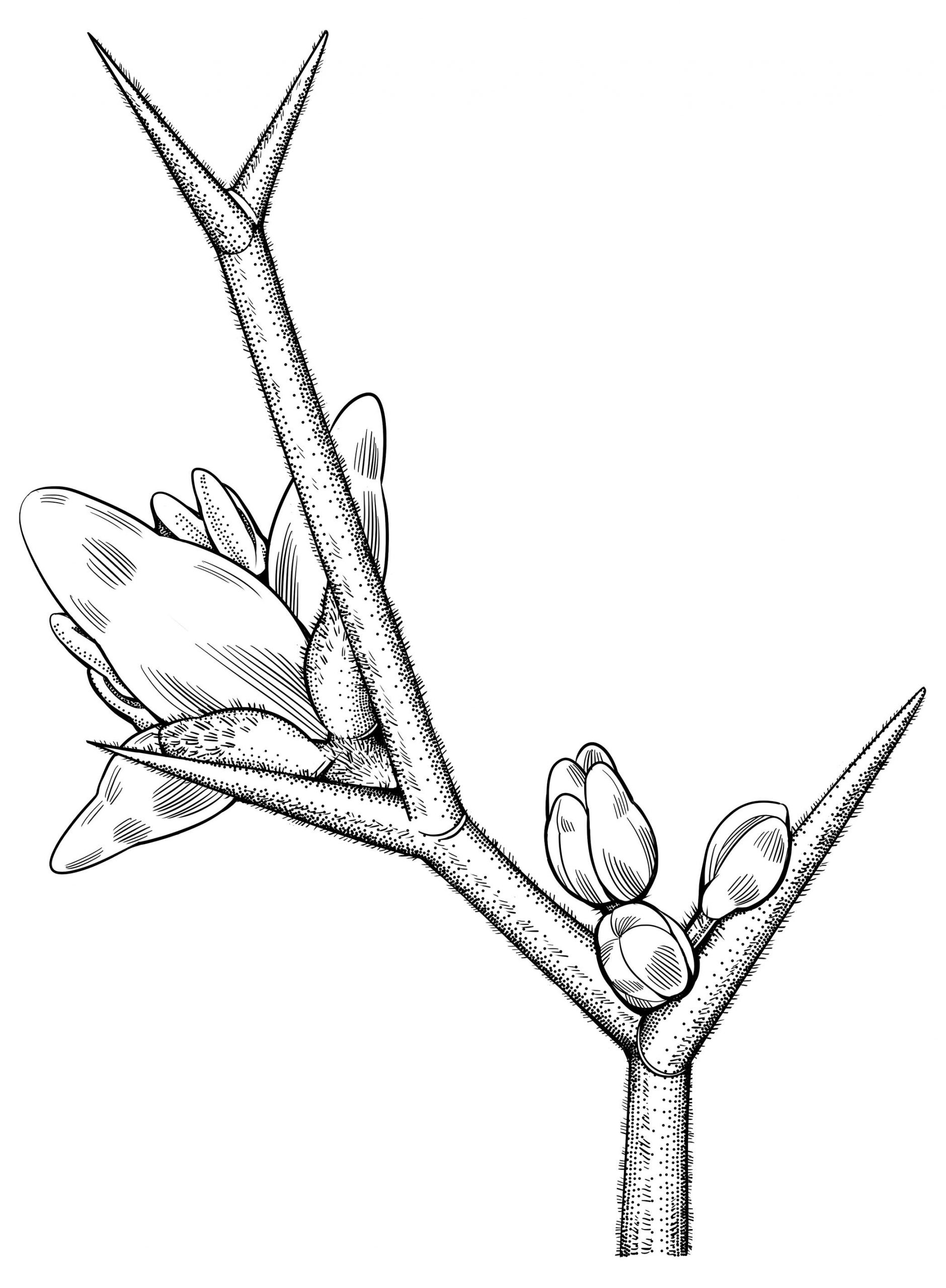
Illustration by Kasey Pham, courtesy of Systematic Botany
Hispaniola’s mountains support large swaths of intact tropical dry forests, highly diverse ecosystems that — like the rainforests they border — are globally imperiled due to the combined effects of deforestation, overharvesting and climate change. But although they face the same threats, the destruction of a tropical dry forest might mean the loss of considerably more species. That’s because rainforests are often found in lowland basins, where conditions like rainfall, temperature and soil type are similar over large areas. While species diversity is high, many rainforest plants can have distributions that span hundreds of miles.
Dry forests can be just as diverse, but their plants tend to be geographically restricted; up to 73% of plant species of dry forests in the American tropics are endemic to a particular region. Plants growing on Caribbean islands, which have been separated from continental landmasses for more than 50 million years, have an extra layer of isolation built in. As a result, much of the Caribbean flora can be found nowhere else on Earth.
“The overall diversity is amazing,” Majure said. “If you go across Hispaniola, Cuba and Jamaica, there are quite a few plant groups that make these forests incredible places to work.”
Along the slopes of the Sierra Martín García alone, Majure and other researchers from the U.S. and Dominican Republic identified more than 700 plant species during their survey. But when Majure and Teodoro Clase of the Dominican Republic’s National Botanical Garden stumbled across a non-descript shrub halfway up the mountain, both botanists were stumped. The plant was largely a tangle of thorns, with few leaves and no flowers or fruits, which left little in the way of identifying characteristics. They carefully collected and pressed one of the branches, which Majure took with him back to the Florida Museum for further study.
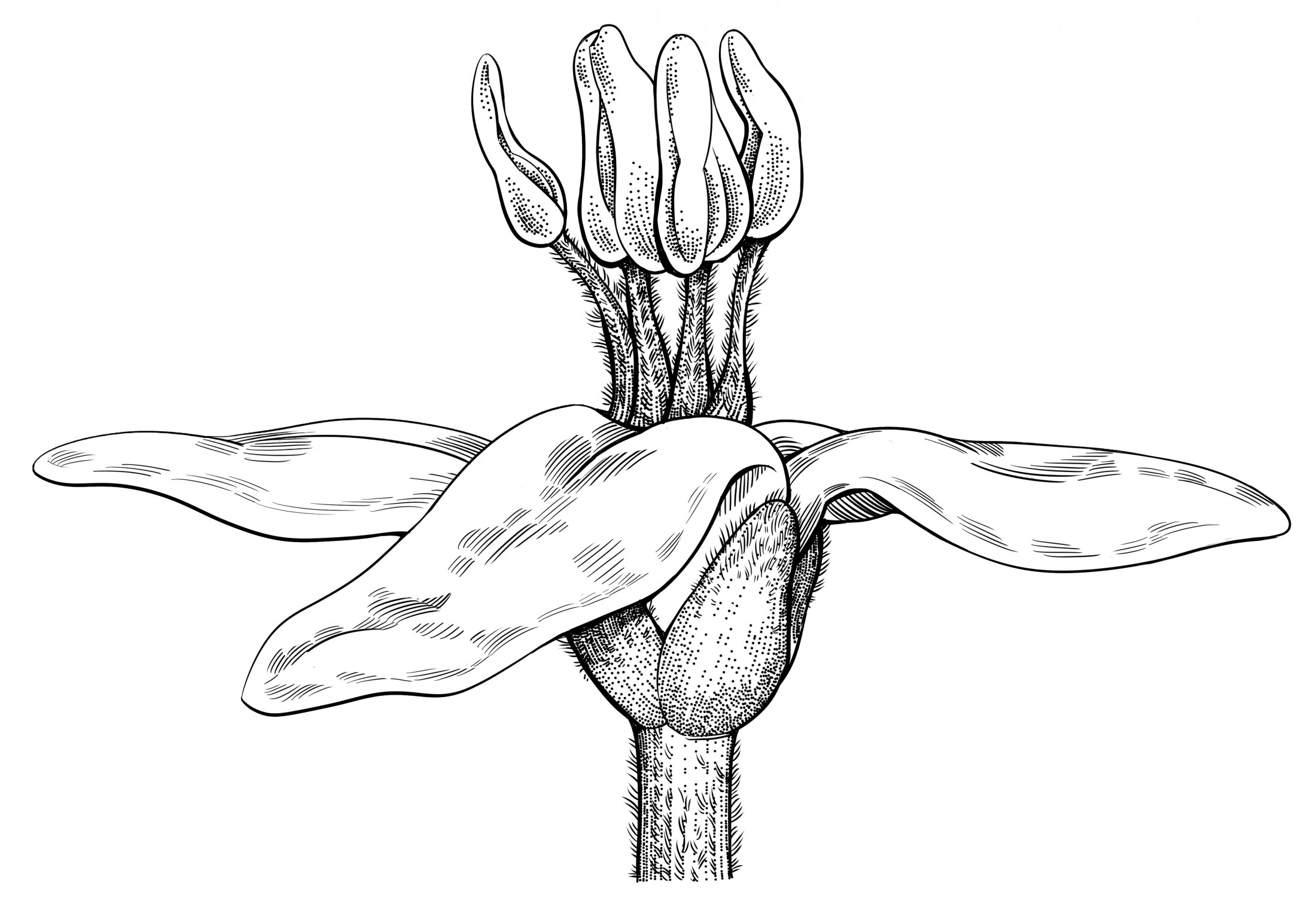
Illustration by Kasey Pham, courtesy of Systematic Botany
After returning from the field, Majure set to work determining the identity of the plant. After documenting the diversity of Caribbean plants for almost a decade, he had a good reference frame for what the species wasn’t. But finding a positive match would require some careful sleuthing. “This sat around for a while and just bothered me to no end because I couldn’t figure it out,” he said.
He found a strong candidate while sifting through the digital records of plant specimens stored at the New York Botanical Garden. There, tucked away among more than 7 million preserved plants, was a small, severed branch with a profusion of pale-green thorns. The specimen had been collected in northwestern Haiti in 1929 by Smithsonian botanist E. C. Leonard and later identified as Castela depressa, a species endemic to Hispaniola and related to the highly invasive tree of heaven that’s spread across much of North America. It seemed Majure had found a match.
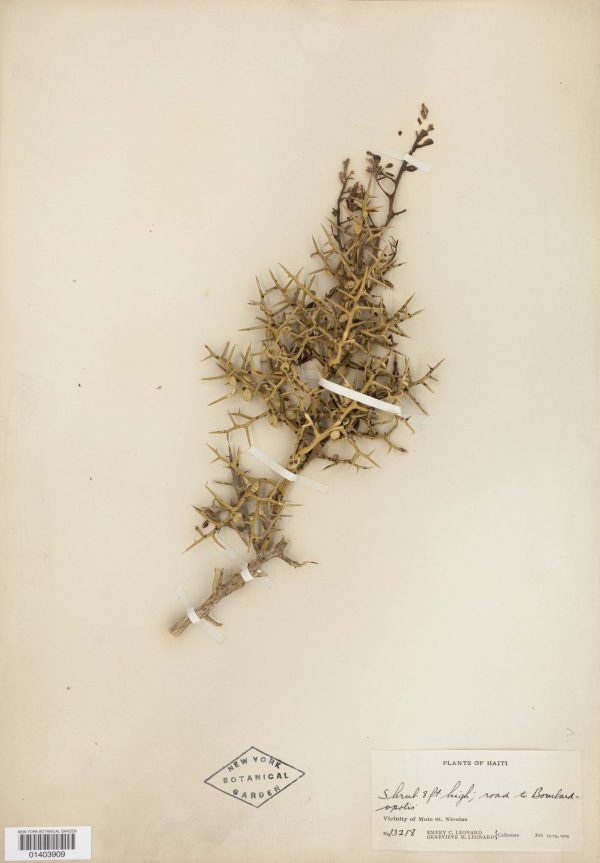
Photo courtesy of the New York Botanical Garden
To confirm the identification, he extracted DNA from both the old and new collection, along with related species, finding that the nearly century-old plant was indeed the match he’d been looking for. But it wasn’t Castela depressa or anything else that had ever been collected.
Instead, Majure had discovered something entirely new. Given that it had only ever been collected twice, it was likely also something incredibly rare. But to officially name a new species, he would need to find another specimen that had both flowers and fruit, which would allow him to paint a complete picture of what the plant looked like.
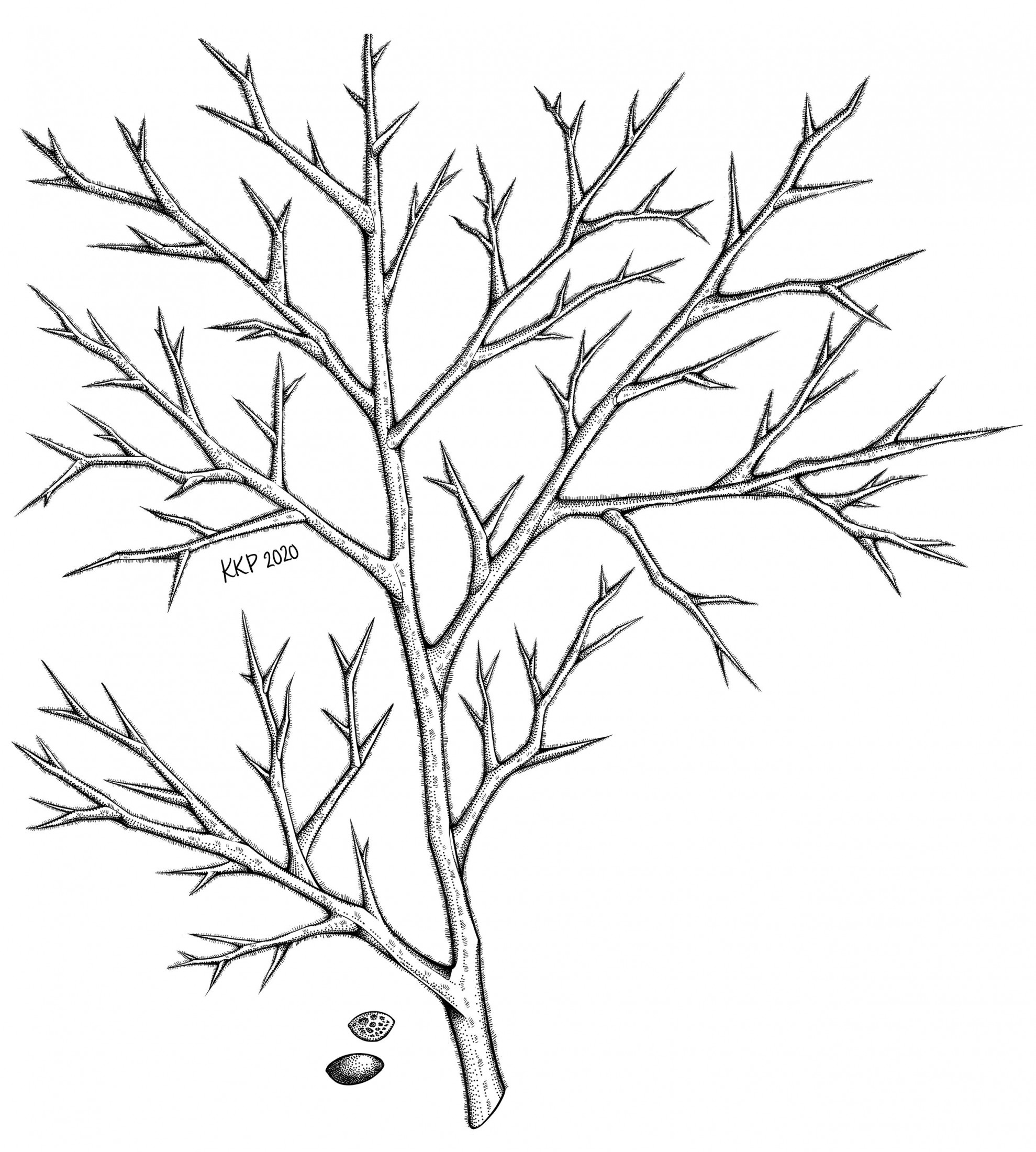
Illustration by Kasey Pham, courtesy of Systematic Botany
So Majure went back to the Dominican Republic with one of his Ph.D. students, Yuley Piñeyro, to hunt for the elusive plant. When they hiked out into Hispaniola’s dry tropical forests in late spring, however, the climate was living up to its name. “It was incredibly dry, and I thought there was no way we were going to find this thing in flower,” Majure said.
But after hiking to about mid-elevation, Piñeyro spotted a flash of red against the backdrop of dull-green vegetation, which upon closer inspection turned out to be the exact plant they were looking for. One of the only things in full bloom that early in the year, the plant had small, white to cream-colored flowers and crimson, scythe-shaped fruit resembling miniature peppers.
“Most other species in these forests have totally lost their leaves during the dry season, but it appears the strategy of this Castela is to flower and fruit while everything else is dormant. That way, it’s fully exposed to pollinators and dispersers,” Majure said.
It’s unclear what pollinates the plant’s flowers or eats its fruit, but Majure thinks its natural history might provide a clue. Castela senticosa likely originated on the island, but it’s closely related to species native to the Sonoran Desert in western North America. Since the seeds are too large to be dispersed by winds, they must have been transported long-distance.
“We think that birds are the primary dispersal agents here, but we don’t actually have any good hypotheses about what birds might have been dispersing something all the way from the Sonoran Desert to the Caribbean,” he said. “It’s still a bit of an enigma.”
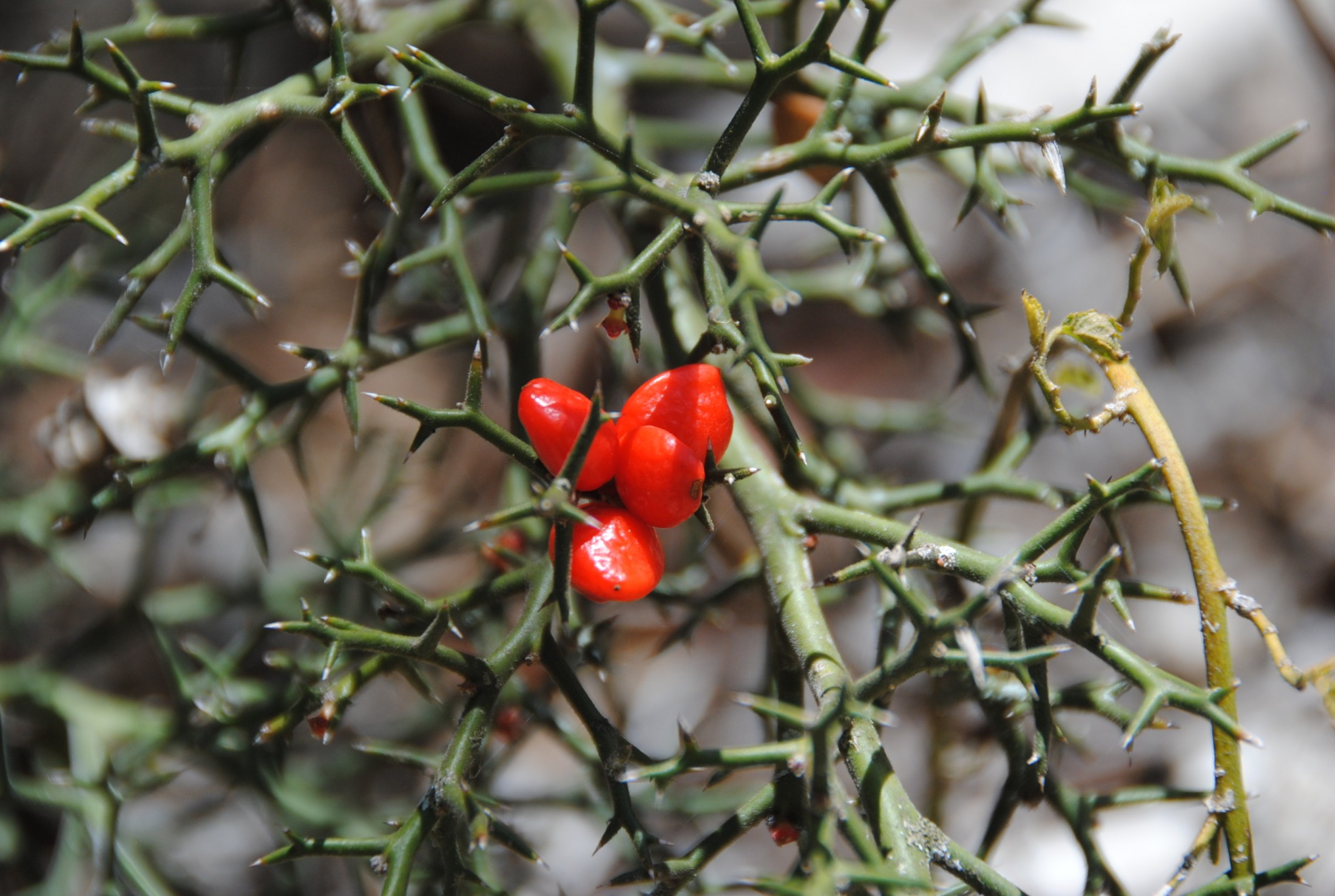
Photo courtesy of Systematic Botany
Castela senticosa isn’t the first, nor will it be the last new species Majure and Clase describe from Hispaniola’s dry forests. The pair recently collaborated on naming a new plant with leaves as small as Aspirin pills, and there are more waiting to be described, Clase said.
“There are several very rare and endemic species that grow in Hispaniola’s dry forests that make them important targets for conservation, and future studies will reveal even more discoveries,” he said.
The study was published in Systematic Botany.
Kasey Pham, of the Florida Museum of Natural History, was also an author on the study and created the illustration of Castela senticosa.
Funding for the study was provided by the National Science Foundation, the Desert Botanical Garden and the Florida Museum of Natural History Biodiversity fund to David Steadman.
Source: Lucas Majure, lmajure@floridamuseum.ufl.edu;
Writer: Jerald Pinson, jpinson@flmnh.ufl.edu, 352-294-0452